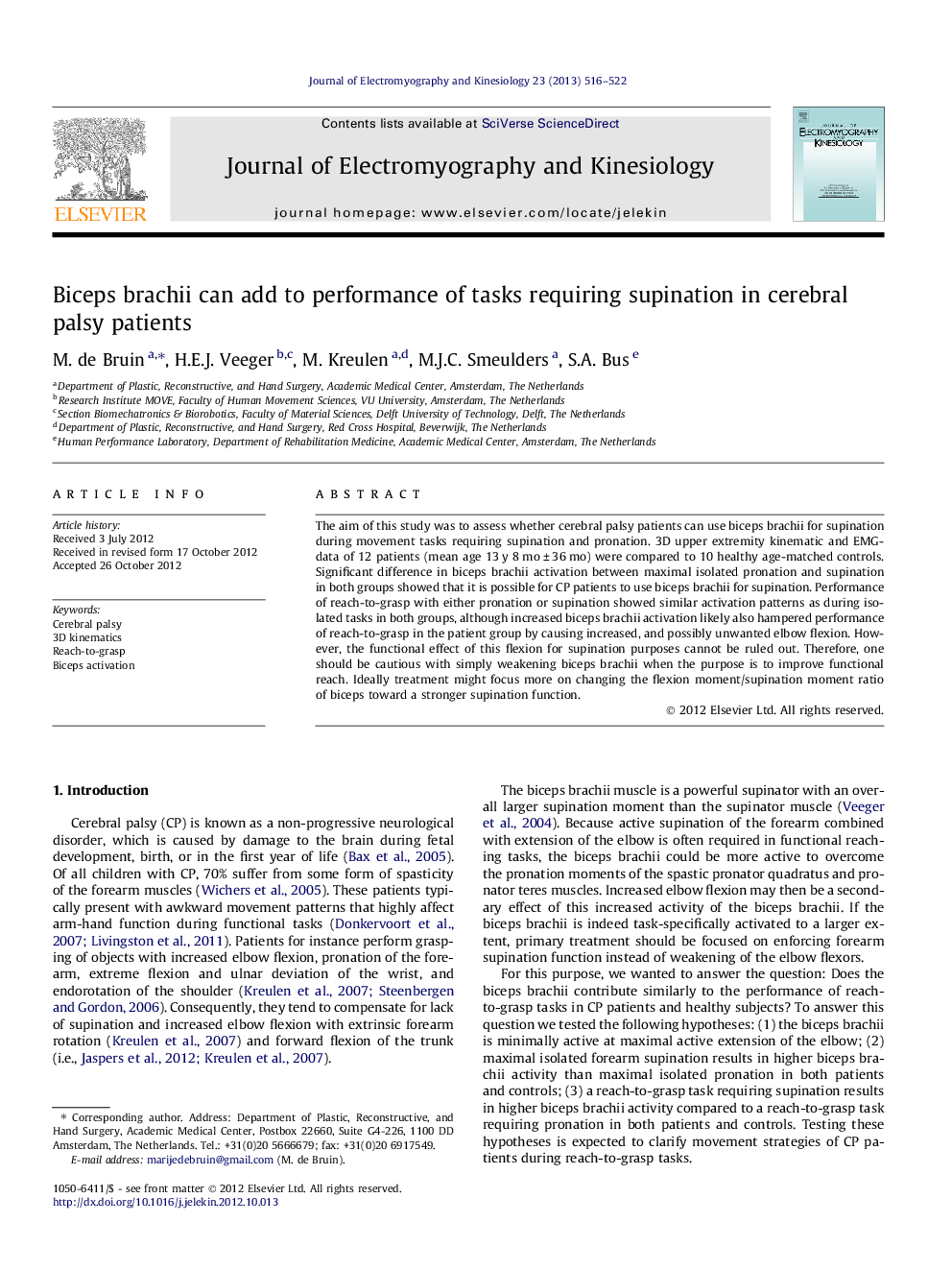| Article ID | Journal | Published Year | Pages | File Type |
|---|---|---|---|---|
| 4064982 | Journal of Electromyography and Kinesiology | 2013 | 7 Pages |
The aim of this study was to assess whether cerebral palsy patients can use biceps brachii for supination during movement tasks requiring supination and pronation. 3D upper extremity kinematic and EMG-data of 12 patients (mean age 13 y 8 mo ± 36 mo) were compared to 10 healthy age-matched controls. Significant difference in biceps brachii activation between maximal isolated pronation and supination in both groups showed that it is possible for CP patients to use biceps brachii for supination. Performance of reach-to-grasp with either pronation or supination showed similar activation patterns as during isolated tasks in both groups, although increased biceps brachii activation likely also hampered performance of reach-to-grasp in the patient group by causing increased, and possibly unwanted elbow flexion. However, the functional effect of this flexion for supination purposes cannot be ruled out. Therefore, one should be cautious with simply weakening biceps brachii when the purpose is to improve functional reach. Ideally treatment might focus more on changing the flexion moment/supination moment ratio of biceps toward a stronger supination function.
